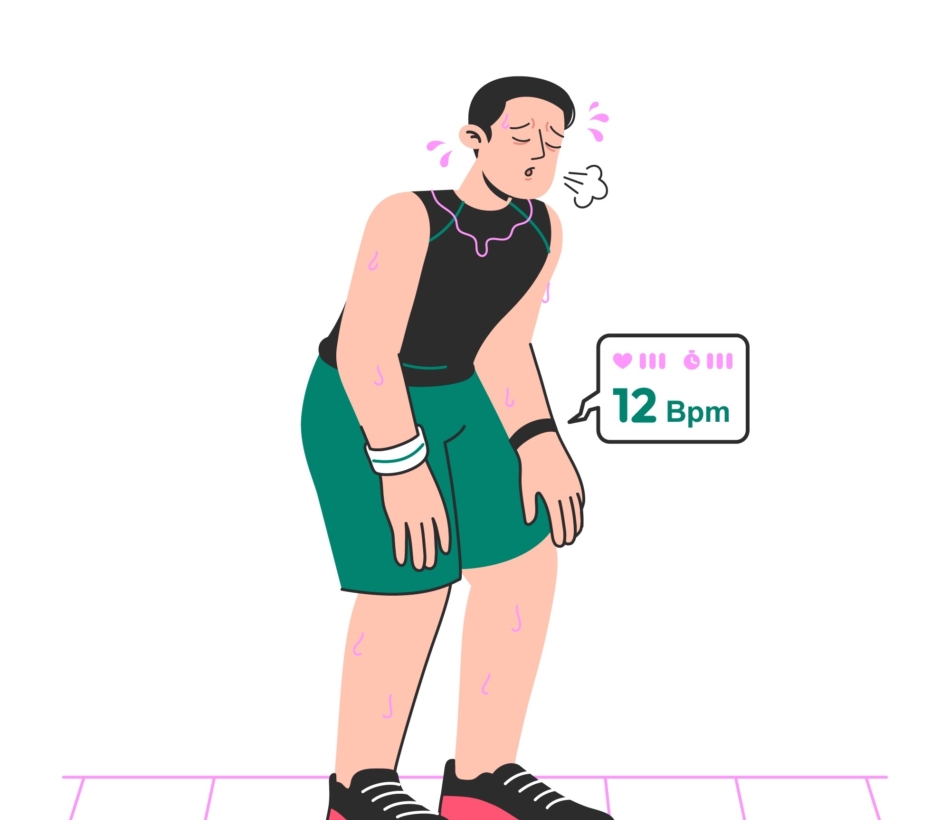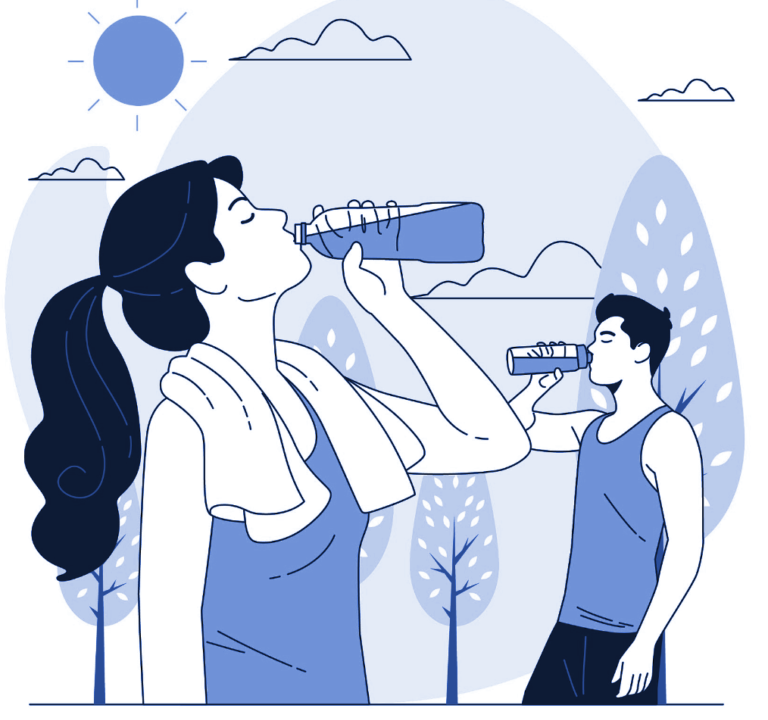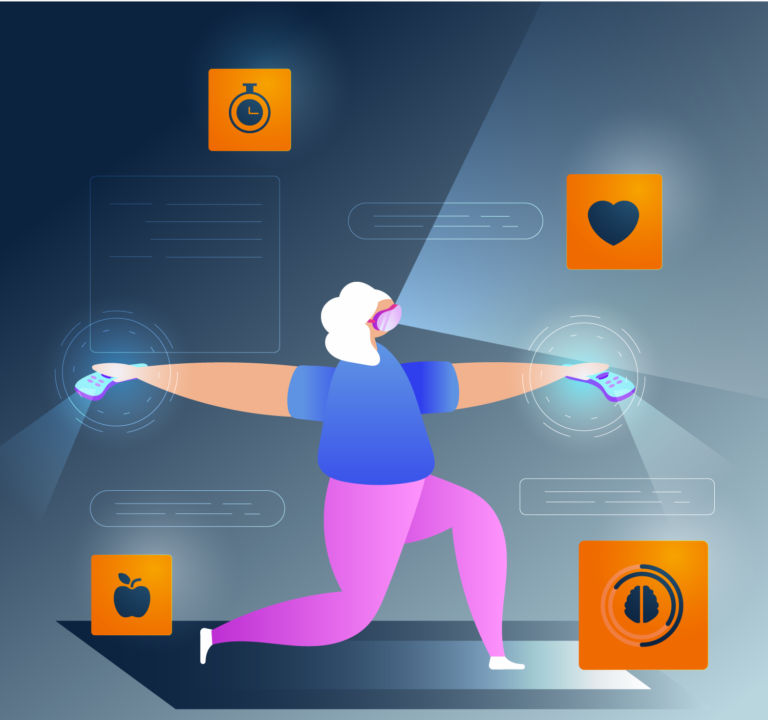BREATHING: VITAL, YET NEGLECTED

Yet, a quiet shift is underway. A growing number of elite athletes and forward-thinking wellness seekers are turning to breathwork to enhance performance and resilience.
Here’s why breathing better is a performance lever hiding in play sight – one with the potentially to benefit nearly anyone who breathes.
INs AND OUTs OF BREATHING
Simply put, each inhalation draws oxygen into the lungs, where it binds to hemoglobin in alveolar capillaries, and gets delivered to cells in support of cellular respiration – the mitochondrial activity fueling aerobic process, from muscle contraction to most biological functions.
Each exhalation conversely eliminates the carbon dioxide by-product of these processes to keep blood pH in balance – which completes one respiration cycle. As metabolic rate rises – during exercise, stress, or digestion — the number of breaths taken per minute, known as respiratory rate (RR) or ventilation, increases.
While breathing is passive by design – occurring under autonomous nervous system control, consciously making small adjustments to how we breathe can unlock significant gains in performance, resilience, and longevity.
1- Nose over mouth - Prioritizing the radiator-like passages of the sinuses – designed primarily to filter, humidify, warm and pressurize inhaled air – optimizes gas exchange and breathing efficiency.
Nose breathing activates the stress-reducing parasympathetic system, helps regulate hormones like nitric oxide & cortisol, strengthens face muscles and lowers perceived effort.
Being able to maintain nose breathing while exercising is a reliable indicator of zone I-II effort, as nose breathing typically becomes unsustainable at high percentages of VO₂max.
Plus, nose breathing adds composure to your game-day poker face.
2- Tolerate CO₂- Breathing is primarily driven by carbon dioxide buildup – rather than O₂ needs. Learning to tolerate higher CO₂ levels facilitates O₂ exchange and improves endurance capacities, VO₂max and heart rate recovery.
Reducing average breathing rates – from the typical 12 to 16 breaths per minute at rest in the healthy – and incorporating breath-holding exercises can significantly improve breathing efficiency. Building CO₂ tolerance is often easier to achieve than improving lactate tolerance.
3- Belly over chest - Breathing may feel passive, but it’s powered by active muscles like the diaphragm and core. Like any other skeletal muscle group, the respiratory muscles can be trained to improve both strength and endurance.
Retrain your default pattern. Diaphragmatic or belly breathing – by inflating the lower abdomen and expanding the rib cage outwards, rather than upwards – improves diaphragm range of motion, lung capacity, posture, and regulates the nervous system.
BREATH GAINS
Breathing properly isn’t just instinctive. Rather, it is a skill that can be trained and refined like strength or mobility.
Consider the following techniques targeting different aspects of the respiratory system discussed above :
- Resonance breathing - or slowing breathing frequency to 4-7 bpm; or Box breathing - controlling inhale-hold-exhale-hold sequences; and Wim Hof method alternating periods of hyperventilation and breath-holding.
- Respiratory muscles resistance training - breathing through pursed lips, a straw or specialized devices such as airofit.
- Altitude training – whether actual or simulated via oxygen-depleted conditions – enhances hemoglobin production and CO₂ tolerance.
- Blood flow restricted training induces localized hypoxia and promotes muscle growth and vascularization, while Hyperbaric oxygen therapy saturates tissues with oxygen to accelerate healing.
- Venturing further into performance enhancement, CO rebreathing protocols could also promote hemoglobin-related endurance performances.
These conscious breathing exercises can be integrated into training to break monotony, enhance awareness, and improve control; or used as effective recovery tools.
Deliberately adjusting breathing rate and syncing it with movement or cadence, consciously hyperventilating before exertion, or employing forced exhalation are all strategies to optimize performance and resilience.
WHY VENTILATION MATTERS?
Tracking progress to refine and maximize breathing strategies is essential. Among the many signals the body sends during exertion, ventilation – breathing frequency and volume – is among the best kept performance metric available.
At the heart of this is the concept of ventilatory thresholds, which mark key metabolic shifts during exercise. Simply put, with effort, RR gradually climbs to reach VT1, and then surges sharply (VT2), just before lactate threshold is reached and anaerobic state sets.
Unlike heart rate, ventilation is consistently linked to perceived effort, and remains unaffected by fatigue, stress, or caffeine intake. It’s unequivocal. When an athlete’s percentage of maximal ventilation catches up with the percentage of maximal HR -- failure is approaching.
As technology catches up, respiratory rate and ventilation-derived metrics are poised to become gold standards for evaluating and prescribing training effort.
BREATHE IN DATA
Options to monitoring respiratory rates in training and competing are emerging.
- Thoracic strain gauges – worn as chest straps or woven into shirt fabric – detect expansion and contraction patterns of the ribcage during respiration. Devices like Neuropeak or Tymewear are making their way into elite athlete fields.
However, chest-based sensors introduce an additional wearable layer and are subject to placement, and sport-specific movement artifacts.
- Companies like Breezelabs are developing algorithms to detect ventilation noises and breathing paths (nasal or oral) from in-ear breathing sensors. Such innovation promises a more practical, all-in-one solution, especially by capturing the wealth of biometrics available from the ear canal. Still, they’ll need to reliably filter out environmental noise and maintain signal integrity in real-world conditions.
Importantly, unlocking the full potential of breathing data will require proper education and context. Without it, respiratory metrics risk adding confusion to an already crowded data landscape. A promising path forward? Integrating ventilation and heart rate into a unified respiratory load score – creating a robust and actionable measure of effort.
A BREATH OF LIFE
While our focus has been on performance, we can’t lose sight of our main theme: longevity. In reality, efficient breathing has benefits extending far beyond the finish line.
In fact, aging is marked by degrading breathing patterns – resulting from shallow breaths, over-breathing, and reduced lung capacity. Over time, these changes can raise sympathetic tone, lower oxygen saturation, and erode fitness, cognition, and resilience.
The breathing techniques discussed above can help counter these trends, and promote AMPK and mTOR-related cellular adaptations central to longevity. Breathwork also regulates stress, enhances sleep, and reinforces parasympathetic tone — all pillars of healthspan.
And today, access to guided platforms like Breathwrk or Tripura breath, gamified breathing apps or devices such as Calibre, CalmiGo and Moonbird has never been better.
The takeaway
Breathing isn’t just (a) vital. It’s a trainable performance, recovery, and longevity lever that needs more recognition.

















